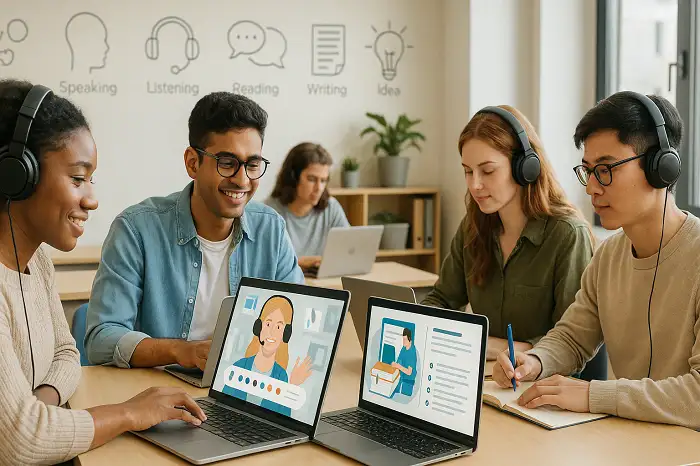Table of Contents
- Video of portfolio assessment advantages
- Abstract
- Introduction
- Literature Review
- What is a portfolio?
- Portfolio assessment and critical thinking
- Data collection
- Results and Discussion
- Raising the level of consciousness
- Autonomy and Independency
- Intrinsic motivation
- Conclusion
- Appendix 1
- References
- How to cite this article in APA Style?
10 portfolio assessment advantages in second language learning and ESL classes, including critical thinking and learner autonomy
Author: Dr. Mohammad Hossein Hariri Asl
Video of portfolio assessment advantages
Abstract
These days, EFL/ESL learning and/or teaching have become so mechanical. Language learners do lack adequate autonomy, consciousness, and critical thinking. On the contrary, they have a tendency towards or have become accustomed to a teacher-centered approach to language learning. That is to say, the learners are, most of the time, language consumers without making enough, if not any, attempts to become more critically active and participatory in the process of language learning. To conduct the study, the researcher used his 184 website members at LELB Society as the participants in a lengthy course of distance learning lasting around three months. In this process-oriented, qualitative case study, the upper-intermediate participants were encouraged to maximize ‘critical thinking’ by means of ‘portfolio assessment’. The data were collected from an open-ended questionnaire that was sent to the participants via email at the end of the course. After analyzing the data, it became clear that critical thinking that is brought forth through portfolio assessment does help the learners to become more conscious, autonomous, and independent in the process of language learning.
Introduction
If you develop your ability to analyze people’s attempts to persuade so that you can accurately interpret what they are saying or writing and evaluate whether or not they are giving a good argument – whether, for instance, they are providing you with a good reason to believe that foxhunting should be banned – then you can begin to liberate yourself from unquestioningly accepting what others try to persuade you of without knowing whether you have a good reason to be persuaded (Bowell & Kemp, 2002).
Critical thinking is a cognitive activity, associated with using the mind. Learning to think in critically analytical and evaluative ways means using mental processes such as attention, categorization, selection, and judgment. However, many people who have the potential to develop more effective critical thinking can be prevented from doing so for a variety of reasons apart from a lack of ability. In particular, personal and emotional, or ‘affective’, reasons can create barriers (Cottrell, 2005).
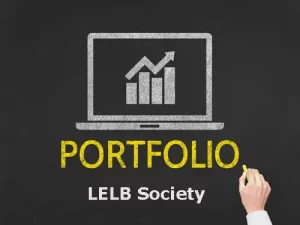
These days, the process of language learning has become rather teacher-centered (as opposed to learner-centered). That’s why we are confronted with the unpleasant phenomenon of ‘student enslavement’ or ‘student alienation’. To be more exact, language learners are marginalized and become inactive in the demanding process of language learning. Little by little, their passivity (as opposed to activeness) overshadows their productivity and efficacy as they are not encouraged to develop an active, critical, and responsive role
As long as the theoretical framework of this study is concerned, it is believed that portfolio assessment can account for optimum critical thinking. It is alleged that if language learners exercise critical thinking in light of portfolio assessment, they can reach for more language awareness. Moreover, it is postulated that conscious and critical language learners tend to become more autonomous and independent since they know how to take charge of their own learning.
Literature Review
While the coverage, role, and orientation of applied linguistics remains contentious (Candlin, 2001; Davies, 1999; McCarthy, 2001; Widdowson, 2000, 2001, as cited in Davies & Elder, 2006) so too does the notion of what it means to be “critical” or to do “critical” work. Apart from some general uses of the term – such as “Don’t be so critical” – one of the most common uses is in the sense of “critical thinking” or literary criticism.
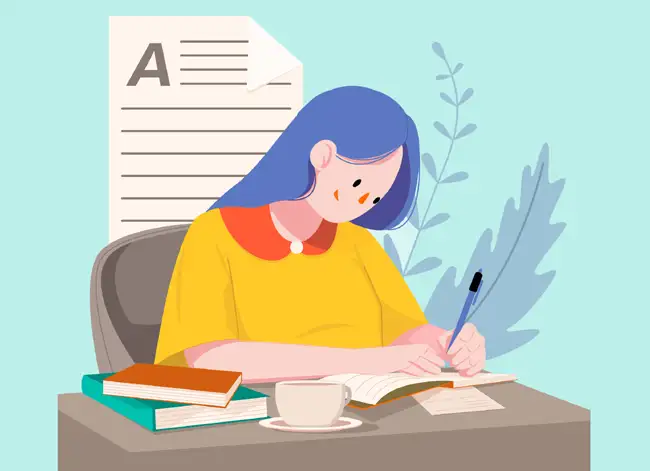
Critical thinking is used to describe a way of bringing more rigorous analysis to problem solving or textual understanding, a way of developing more “critical distance” as it is sometimes called. This form of “skilled critical questioning” (Brookfield, 1987, as cited in Davies & Elder, 2006), which has recently gained some currency in applied linguistics, can be broken down into a set of thinking skills, a set of rules for thinking that can be taught to students.
Many of the skills you will learn, as you become a more critical thinker, will improve the quality of your writing and speaking. As you write and speak, it helps to be aware of the expectations careful thinkers will have. Because your objective is communication, many of the questions the thoughtful person will ask in evaluating your writing or speech should serve as guides for your own attempts to communicate well. Several of the critical questions that we urge you to ask highlight problems you will want to avoid as you write or speak (Browne & Keeley, 2007).
Critical thinking objectives articulate which learning skills students will develop. For example, students will be able to determine characteristics of a good paragraph and say why they think a paragraph is good (Hall & Hewings, 2001).
Critical thinking is a complex process of deliberation which involves a wide range of skills and attitudes. It includes:
- Identifying other people’s positions, arguments, and conclusions;
- Evaluating the evidence for alternative points of view;
- Weighing up opposing arguments and evidence fairly;
- Being able to read between the lines, seeing behind surface, and identifying false or unfair assumptions;
- Recognizing techniques used to make certain positions more appealing than others, such as false logic and persuasive devices;
- Reflecting on issues in a structured way, bringing logic and insight to bear;
- Drawing conclusions about whether arguments are valid or justifiable, based on good evidence and sensible assumptions;
- Presenting a point of view in a structured, clear, well-reasoned way that convinces others (Cottrell, 2005, p. 2).
In teaching, if the discrepancy, where it exists, between a teacher’s expressed beliefs and the ways in which that teacher acts professionally is a large one, then learners are likely to receive confused and confusing messages. In an effort to improve teachers’ self-awareness in this respect, some educational theorists have fostered the notion of ‘critical reflection’ (Boud, Keogh & Walker, 1981, as cited in Burden & Williams, 1997).
The intention here is to enable teachers to become ‘reflective practitioners’ (Schön, 1983, as cited in Burden & Williams, 1997), thereby they subject their everyday professional practice to ongoing critical reflection and make clear their own particular world view by means of such consideration.

The task of the reflective practitioner is to make the tacit or implicit knowledge explicit by reflection on action, by constantly generating questions and checking our emerging theories with both personal past experience and with the reflections of others. This is one of the main thrusts of the movement towards teachers as action researchers (Kemmis, 1985, as cited in Burden & Williams, 1997).
Schön (1983, as cited in Burden & Williams, 1997) outlines some ways in which teachers-as-reflective-practitioners act. Firstly, the curriculum must be seen as an inventory of themes of understanding and skill to be addressed rather than a set of materials to be learnt. Each student has to be treated as an individual, “a universe of one” (Schön, 1983, p. 333, as cited in Burden & Williams, 1997).
A reflective teacher needs a kind of educational technology which does more than extend her capacity to administer drill and practice. Most interesting to her is an educational technology which helps students to become aware of their own intuitive understandings, to fall into cognitive confusions and explore new directions of understanding and action (Schön, 1983, p. 333, as cited in Burden & Williams, 1997).
The following are among the techniques for increasing critical thinking proposed by Browne and Keeley (2007, pp. 206 – 7):
- Be certain to demonstrate that you really want to grasp what is being said. Ask questions that indicate your willingness to grasp and accept new conclusions.
- Restate what you heard or read and ask whether your understanding of the argument is consistent with what was written or spoken.
- Voice your critical questions as if you are curious. Nothing is more deadly to the effective use of critical thinking than an attitude of “Aha, I caught you making an error.”
- Request additional reasons that might enable the person to make a stronger argument than the one originally provided.
- Work hard to keep the conversation going. If critical thinking is deployed like a bomb, thinking on that topic is halted.
- Ask the other person for permission to allow you to explore any weaknesses in the reasoning. The idea with this strategy is to encourage the other person to examine the argument with you.
- Convey the impression that you and the other person are collaborators, working toward the same objective – improved conclusions.

Good critical thinking skills bring numerous benefits such as (Cottrell, 2005, p. 4):
- Improved attention and observation
- More focused reading
- Improved ability to identify the key points in a text or other messages rather than becoming distracted by less important materials
- Improved ability to respond to the appropriate points in a message
- Knowledge of how to get your own point across more easily
- Skills of analysis that you can choose to apply in a variety of situations.
Skills in critical thinking bring precision to the way you think and work. You will find that practice in critical thinking helps you to be more accurate and specific in noting what is relevant and what is not. The skills listed above are useful to problem-solving and to project management, bringing greater precision and accuracy to different parts of a task. Although critical thinking can seem like a slow process because it is precise, once you have acquired good skills, they save you time because you learn to identify the most relevant information more quickly and accurately (Cottrell, 2005).
What is a portfolio?

In education, portfolios became popular in the mid-1980s as a logical follow- up to writing folders. These folders, which included daily pieces of writing, were transformed into portfolio assessment tools immediately after being introduced in the area of language arts.
Portfolios, as assessment tools, have been defined as a purposeful and systematic collection of students’ work that demonstrates the students’ progress, efforts and accomplishments in one or more areas. Portfolios are appropriate vehicles for ongoing assessment which represent activities and processes, more than products (Bastidas, 1996).
Brown and Wolfe-Quintero (1997, as cited in Banfi, 2003) define the teaching portfolio as “a purposeful collection of any aspect of the teacher’s work that tells the story of the teacher’s efforts, skills, abilities, achievement and contributions to his/her students, colleagues, institution, academic discipline or community” (p. 28).
Teaching portfolios can serve three major purposes: (1) evaluation, (2) employment, and (3) professional growth. Evaluation portfolios are used to assess knowledge and/or skills (Shackelford, 1996, as cited in Tanner, Longayroux, Beijaard & Verloop, 2000); they contain a number of products to be assessed. Employability portfolios demonstrate evidence of attainment of required skills (Johnson & Rose, 1997, as cited in Tanner, Longayroux, Beijaard & Verloop, 2000); an example would be a collection of a teacher’s best work which is used for appraisal or promotion purposes. Professional growth portfolios value the learning process and reflection (Antonek, McCormick & Donato, 1997, as cited in Tanner, Longayroux, Beijaard & Verloop, 2000) and are used to show development or growth.
In addition to tests, there are a variety of other non-test procedures that can be used to gather ongoing information on learners’ progress and achievement, including systematic observation, conferences between the teacher and the student, and self- and peer assessment (Nunan, 2003). One method that has been shown to be particularly useful is the portfolio. According to Nunan (2003), a portfolio contains a collection of student work selected by the student that demonstrates their efforts, progress, or achievement over a period of time. Portfolios may contain samples of classroom tests, samples of writing, audiotapes, or videotapes of oral performances.
One of the most popular alternatives in assessment, especially within a framework of communicative language teaching, is portfolio development. According to Genesee and Upshur (1996, as cited in Brown, 2004), a portfolio is “a purposeful collection of students’ work that demonstrate…their efforts, progress, and achievements in given areas” (p. 99). Portfolios include materials such as:
- Essays and compositions in draft and final forms;
- Reports, project outlines;
- Poetry and creative prose;
- Artwork, photos, newspaper or magazine clippings;
- Audio and/or video recordings of presentations, demonstrations, etc.;
- Journals, diaries, and other personal reflections;
- Tests, test scores, and written homework exercise;
- Notes on lectures, and
- Self- and peer-assessments—comments, evaluations, and checklists (Brown, 2004, p. 256).
Gottlieb (1995, as cited in Brown, 2004) suggested a developmental scheme for considering the nature and purpose of portfolios, using the acronym CRADLE to designate six possible attributes of a portfolio as: Collecting, Reflecting, Assessment, Documenting, Linking, and Evaluating.
Johns (1995) states some of the benefits that could be derived from encouraging students to use portfolios and diaries in the course. Students organize classwork and make goals transparent; they offer opportunities for comparison; they provide a measure for progress and change; and they assist students in correcting and revising their work. They also give students several chances to demonstrate what they can accomplish.
According to Farr and Lowe (1991, p. 79, as cited in Renandya & Richards, 2002), for portfolios to meet the goals of literacy assessment, they must be developed as follows:
- Teachers and students both add materials to the portfolio.
- Students are viewed as the owners of the portfolios.
- Conferencing between students and the teacher is an inherent activity in portfolio assessment.
- Conference notes and reflections of both the teacher and the student are kept in the portfolio.
- Portfolios need to reflect a wide range of student work and not only that which the teacher or student decides is the best.
- Samples of the student’s reading and writing activities are collected in the portfolios, including unfinished projects.
Portfolio assessment and critical thinking
Pierce and O’Malley (1992, p. 2) define portfolio assessment as:
- The use of records of a student’s work over time and in a variety of modes to show the depth, breadth and development of the student’s abilities;
- The purposeful and systematic collection of student’s work that reflects accomplishment relative to specific instructional goals or objectives;
- An approach to combining the information from both alternative and standardised assessments; and
- Keys to student’s reflection and self-motivation

It is generally believed that one of the main benefits of portfolio assessment is the promotion of learner and teacher reflection (Gottlieb, 1995; O’Malley & Valdez Pierce, 1996, as cited in Santos, 1997). In this type of assessment, students are encouraged to think about their needs, interests, goals, weaknesses and strengths in the process of language learning in a critical and reflective manner.
When we want to assess students’ progress towards achieving specific critical thinking foals, we can ask them to sift through the items in their working portfolios and select one or more that demonstrates a specific element of the program. If students in a math or science class were asked to show what they had done to develop a disposition to monitor, manage and reflect on their thinking, for example, they might choose log entries in which they reflect on their thinking while solving math problems or completing a science experiment. In an English class, students might demonstrate their ability to note strengths and weaknesses in reasoning by selecting an analysis of newspaper editorials or letters to the editor (Unrau, 1997).
Santos (1997) states three major benefits of learner reflection derived from portfolio assessment. He argues that by means of portfolio assessment, both the teacher and the students can (1) take informed actions, (2) avoid pointless blaming, and (3) create a healthy learning environment.
According to Herbert (2001, as cited in Nunes, 2004), portfolio assessment is viewed as a central curricular framework for the development of students’ metacognitive awareness. On the part of the teacher; on the other hand, portfolios help the teacher to develop deeper knowledge of the contents, activities, materials and strategies the students prefer.
As a result, the teacher can design future instructional strategies, materials and activities that are more practical and valuable to the learners. According to Nunes (2004), the information obtained through portfolio assessment also allows the teacher to adjust instruction to the students’ individual goals, needs and learning dispositions.
Above all, when students learn to reflect on their own learning process, they will develop more autonomy in their learning through analyzing the efficacy of the strategies used to accomplish certain tasks (Nunes, 2004). In response to learner autonomy, Banfi (2003) argues:
The level of autonomy involved in the preparation of portfolios is a key factor, as it provides an opportunity for the students (and the lecturer) to shape the tasks to fit the specific purposes of the course. This flexibility, together with the possibility of integrating existing skills and developing new ones, means that portfolios provide an excellent tool to maximize the chances of success in the course (p. 35).

One of the benefits derived from critical thinking in the light of portfolio assessment is ‘self-assessment’. According to Nunes (2004), “Self-assessment is defined as the ability to make judgements about what one knows and does” (p. 334). This involves asking learners to report on their own knowledge of the L2. A good example is to be found in Paribakht and Wesche’s (1999, as cited in Barkhuizen & Ellis, 2005) instrument for eliciting learners’ self-assessment of their lexical knowledge.
The crucial issue regarding self-assessment is its validity. A number of studies have investigated this. For example, Bachman (1990, p. 148, as cited in Barkhuizen & Ellis, 2005) refers to two studies showing that the manner in which the self-rating questions are framed affects the test-takers’ responses. Baak (1997) also believes that students, who are educated in the light of portfolio assessment at a metacognitive level, automatically develop the capacity to become active, critical participants in their own learning process.
Self-assessment is viewed as a central feature of portfolio learning and assessment. Proponents of portfolio assessment claim that it “enables instruction to be linked to assessment, promotes reflection, helps learners to take responsibility for their own learning, enables learners to see gaps in their learning, and enables learners to take risks” (Ekbatani, 2000, pp. 6–7, as cited in Little, 2005). In other words, portfolio assessment is seen as a means of promoting learner autonomy.

When students are expected to prepare a portfolio of their best work during the semester, which is followed by some discussions with the instructor in a personal interview at the end of the semester, their overall progress is documented by their subjective feelings and the amount of effort they have put into the course; their achievement as measured by the “objective” grades they have been given during the semester; and any other information they believe is relevant (Rea, 2001). In this way, the course begins and ends with a portfolio focus.
For self-evaluation, students themselves can come up with their own evaluation guidelines, use teacher-made criteria, or a combination of the two. Students are usually surprised to see how they appear and sound on the tape and can often come up with their own ideas about how to improve their performances (Celce-Murcia, 2001). For instance, if the speeches are audiotaped or videotaped, some of the language analysis activities described below can be used to encourage learners to become aware of their individual problems with pronunciation, grammar, vocabulary, and fluency.
In this response, ‘learning logs’ can turn out to be pretty useful in encouraging the students to become more critical learners. According to Richards (1998), in learning logs, students describe their learning experiences in specific classes, the difficulties they had, what they enjoyed learning, whether they had the language skills needed to follow instruction; and so on. Learning logs are particularly useful for teachers working with students, who are being education through the medium of a second language, that is, students who need to learn the second language in order to benefit from academic instruction in the second language (Richards, 1998).
Data collection
To collect the data, the researcher used his website members (184 ones) as the participants over a lengthy period of time, that is, three months, on the basis of a ‘computer-mediated communication’ (CMC) approach. The participants were undergraduates. According to Gass and Mackey (2005), CMC involves learners in communicative exchanges using the computer. CMC is a text-based medium that may amplify opportunities for students to pay attention to linguistic form as well as providing a less stressed environment for second language practice and production.
Thus, it may be that CMC can provide richer data for second language learners than can face-to-face oral exchanges. Gass and Mackey (2005) maintain that CMC software generally allows users to engage in both simultaneous (chat-based) and asynchronous (forum-based) communication. What is typed is stored, and users, teachers, and researchers can then retrieve prior conversations if desired. The forums generally include open, moderated, closed, and restricted formats, and some have support for distance learning (Gass & Mackey, 2005).
Researchers within the interactionist tradition of second language acquisition (Chapelle, 2001; Hegelheimer & Chapelle, 2000, as cited in Hegelheimer & Tower, 2004) have argued that principled collection of interaction data is necessary to determine not only how students navigate through a CALL program, but also how user choices affect second language learning.
This study was done in a qualitative mode and the data were collected based on ‘triangulation’. To be more precise, as Richards and Schmidt (2002) have pointed out, it was attempted to collect the research data from several different sources or in different ways, that is, observations, documentations, and recorded interviews, in order to provide a fuller understanding of the phenomenon. Another reason for the application of ‘triangulation’ was to overcome the problems of bias, reliability, and validity as far as possible.
The participants were categorized according to the ‘intermediate and upper-intermediate’ levels of proficiency. During this time span, that is, three months, the researcher taught English to them in a fairly unique manner. A ‘Skill Integrated’ approach together with ‘Negotiated Curriculum’ and ‘Portfolio Assessment’ was put to use to account for more naturalness, democracy, dynamism, and above all, Critical Thinking on the part of the participants.
The participants were encouraged to create ‘learning logs’ reflecting their personal ideas, experiences, and preferences in relation to the course. They were also encouraged to compare and contrast their logs with their peers to achieve both self and peer-assessment in a critical manner.
A large number of Free Discussion classes, under the title of “Think Nice Association (TNA)”, were held for the registered site members on psychological and inspirational themes to account for more active participation.

On the Skype and Paltalk widgets that are installed on the researcher’s website entitled LELB Society the participants could save and record the entire sessions so that they could create a portfolio of their own progress in the process of second language learning. The website as an online language school was intended to hold some categorized English classes for online students from different parts of the world.
The classes that were used as the data of this research were held twice a week, each session lasting for two hours within three months continuously. Each session encompassed teaching new materials,[2] lecture delivery on the part of the students, doing the assigned exercises, conversations on pre-specified challenging topics (e.g. ‘Do you prefer childhood or adulthood?’, ‘Mental Differences between Men and Women’, ‘Do you believe in luck?’) etc.
The book “English Collocations in Use” was the major coursebook. However, the study was not on the basis of a book-centered approach.
In fact, the participants were asked to create a folder on their computers under the title of “My Portfolio”, including a list of newly learnt words and grammar points, learning logs, audio files of the recorded sessions, the contents of the classes in Word documents, their compositions, lectures and other products.
Sometimes the thought of asking students to develop a portfolio is a daunting challenge, especially for new teachers and for those who have never created a portfolio on their own. Successful portfolio development will depend on following a number of steps and guidelines (Brown, 2004, pp. 257 – 9):
- State objectives clearly.
- Give guidelines on what materials to include.
- Communicate assessment criteria to students.
- Designate time within the curriculum for portfolio development.
- Establish periodic schedules for review and conferencing.
- Designate an accessible place to keep portfolios.
- Provide possible washback-giving final assessments.
They were also encouraged to express their feedback freely either in the form of verbal negotiation or interviews or written texts via sending emails or making comments on the ‘Writing Page’ of the website.
At the end of the course, after engaging the participants in some thought-provoking activities, such as ambiguous pictures, English quotes and riddles, etc., an open-ended questionnaire was sent to the participants and they were asked to complete and send it back to the research via email. Notice that some of the questionnaire items have been extracted from Genesee and Upshur (1996, as cited in Brown, 2004). Please refer to Appendix 1 to see the questionnaire.
The investigator as the primary instrument of data collection and analysis assumed an inductive stance and strived to derive meaning from the data. The end result of this type of qualitative research is a theory that emerged from or was ‘grounded’ in the data—hence, ‘grounded theory’. In this qualitative research, which falls into the category of a ‘case study’, the researcher selected which type of data to gather based on the theoretical orientation that informed the investigation. Hitchcock and Hughes (1995, as cited in McKay, 2006, p. 71 – 2) maintain that a case study has the following distinctive features:
- It is concerned with a rich and vivid description of events relevant to the case.
- It provides a chronological narrative of events relevant to the case.
- It blends a description of events with the analysis of them.
- It focuses on individual actors or groups of actors and seeks to understand their perceptions of events.
- It highlights specific events that are relevant to the case.
- An attempt is made to portray the richness of the case in writing up the report.
As Strauss and Corbin (1994, as cited in Merriam, 1998) note, “The major difference between this methodology and other approaches to qualitative research is its emphasis upon theory development” (p. 274).
Results and Discussion
Throughout the study, it became clear that when the participants have the chance to analyze and re-analyze the process of learning; that is to say, when a learner-centered approach in which Critical Thinking is authorized is employed, the learners will raise the level of their consciousness. They will become more analytical and critical.
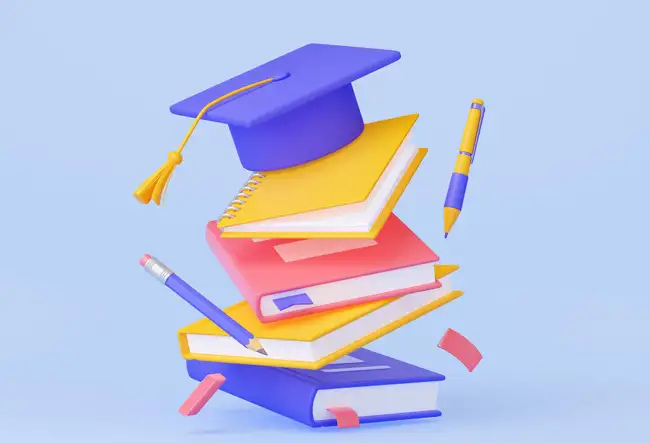
In their portfolios, which were analyzed by themselves, their peers on the website, and finally, the investigator, this claim was substantiated that when the learners gain more control over their learning, for instance by dint of ‘portfolio assessment’, they make an attempt to become well-acquainted with the details of their own course, including the goals, objectives, syllabus, methodology, evaluation, and so on.
It was noticed that as the teacher provides the students with ample opportunities to practice ‘activeness’ (as opposed to passivity) with the help of ‘negotiated curriculum’, ‘learner-centeredness’, ‘research-based enquiry’, etc., the students will become more enthusiastic about developing their best to the course. This is because of the fact that their integrative and internal motivation will rise optimally, and they will engender a sense of accomplishment by performing their own tasks.
In this response, since the main area of focus was on the lengthy process of the course, rather than its transient end result, which is not so tenable, even from the very beginning of the course, the participants were encouraged to have a part in needs analysis and curriculum development. According to Richards (2009), these days, teachers decide that rather than develop the detailed content of the program in advance, they will involve the students in the development of the program’s goals and content.
In this process-oriented approach, on the basis of ‘portfolio assessment’ that brought forth authentic, alternative and self-assessment on the part of the students, the participants and the investigator were interacting with each other in a trustworthy and respectful manner since; on the one hand, the teacher or the researcher was thankful to the participants for their cooperation and active and responsive participation; and on the other hand, the participants were really grateful for the ample opportunities, which were provided for them to maximize their critical and reflective thinking and metacognitive abilities.
In this response, since the participants’ success or failure was not merely determined through final examinations, according to one of the participants’ points of view reflected in the questionnaire:
“Each session was almost regarded as a final exam, yet in a completely stress-free atmosphere”.
“Each session was almost regarded as a final exam, yet in a completely stress-free atmosphere”.
Regarding this issue from another perspective, this claim is supported that when the learners, apart from self-assessment, can implement ‘peer-assessment’ and ‘cooperative learning’ in an amiable and mutual rapport, they can also get the most out of critical and reflective thinking, which is pretty conducive to their learning effectiveness.

To achieve this fulfillment, it was necessary for them to become analytical readers and also listeners. As Wyrick (2008) has wisely pointed it out, analytical reading requires more than allowing your eyes to pass over the words on the page; it’s not like channel-surfing through late-night TV shows, stopping here or there as interest strikes. Analytical reading asks you not only to understand the writer’s ideas, but also to consider how those ideas were presented, why the writer presented them that way, and whether that presentation was effective.
In relation to analytical and critical reading, one of the participants who were under the positive influence of the lengthy course maintained:
In this course, I learnt that reading without thinking is like eating without digesting.
Furthermore, throughout the course in which portfolio assessment was of primary importance, the participants learnt how to improve their ‘critical writing’ by means of some well-established techniques, namely brainstorming, nonstop or free writing, argumentation, Cinquain Poems, and above all, ‘think-on-paper’ (Tracy, nd, as cited in Mosallanejad & Hariri Asl, 2010).
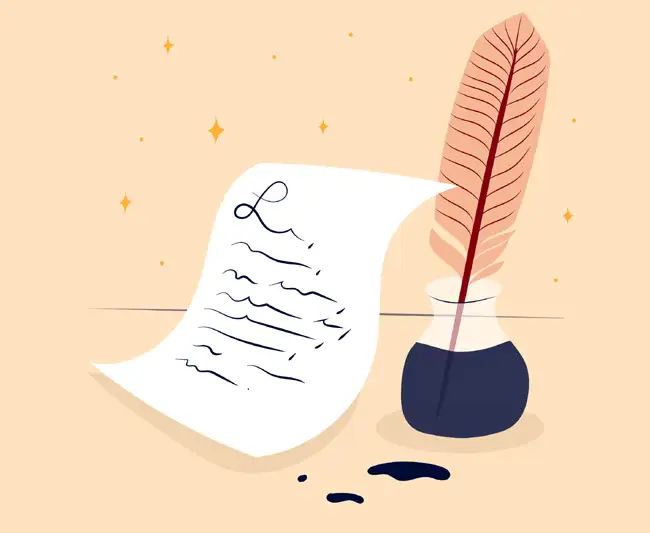
A cinquain poem is a practical way to focus your attention on a subject and generate some practical subjects is the employment of a technique that is called “Cinquain Poems”. This technique is a writing activity in which you create simply poems within a very structured framework. A Cinquain poem is a five-line poetic form that can provide a dependable basis for the activation of writers’ knowledge structures or scripts. This type of poem is a proper brainstorming or free-writing activity, particularly in response to writing classes.
It is also worthwhile adding that the learners, who are encouraged to think critically and reflectively, little by little, will develop this skill, i.e. Critical Thinking, and become fairly habituated to it. In other words, they tend to become more critical and analytical in a pretty more general scope, that is, their own lives. While we are on the subject, one of the participants has maintained:
With the help of the ‘Learn English to Live Better (LELB Society)’ and its unique and effective methodology, I have happened to become more thoughtful in my life.
In this regard, another participant declared:
The title of this academic community (Learn English to Live Better) has wisely been chosen because the quality of my life has improved a lot since I became one of its active members.
Raising the level of consciousness
Through the critical and reflective process of portfolio assessment, the learners can develop optimum self-consciousness and self-knowledge, particularly with the help of learning logs and journals. In so doing, the learners will take notice of their own learning styles, e.g. visual or auditory, impulsive or reflective, extroverted or introverted, etc. Then they can employ appropriate learning strategies in response to their styles. While we are talking about it, Brown (2001, p. 60) argues:
Successful mastery of the second language will be due to a large extent to a learner’s own personal “investment” of time, effort, and attention to the second language in the form of an individualized battery of strategies for comprehending and producing the language.
In terms of ‘peer-assessment’ in a quite cooperative and friendly mode, the participants became so active and critical. In the course of the study, it was understood that not only self-assessment, but also peer-assessment is regarded as a thought-provoking and effective technique for ‘critical thinking’. This claim was substantiated that peer-assessment, in a cooperative, mutual, and friendly manner, is per se a perfect way for the learners to show their attention and respect to their classmates. In this response, one of the participants maintained:
The best gift you could ever give to somebody is your attention.
Willis and Willis (2007) refer to a special type of focusing as ‘focus on language’. They (2007) believe that sometimes this focus on language involves teacher participation, too. Teachers repeat learner utterances, reshaping them to make them clearer, or supply words or phrases to help learners to shape their message. When teachers do this, they are acting as participants in the interaction. As long as teachers are doing this in order to help learners with communication, we regard it as a focus on language (Willis & Willis, 2007).
It was clarified that when language learners are given enough opportunities to reflect upon the process of learning critically enough, the level of their consciousness or awareness will go up dramatically. As Gass and Mackey (2005) have argued, consciousness-raising tasks are intended to facilitate learners’ cognitive processes in terms of awareness of some language area or linguistic structure. In these tasks, learners are often required to verbalize their thoughts about language on their way to a solution.
As a matter of fact, the more the learners become cognizant and attentive to the demanding process of language learning, the more they can take pleasure in this sort of ascendancy. According to one of the participants, who was quite active in reading and writing English quotations:
Life that is not examined is not worth living. (Socrates)
Autonomy and Independency
Even though learning logs call for some structure and focus, according to Richards (1998), they remain largely student centered and, therefore, contribute to student involvement in the assessment process. Consequently, they have an important role to play in an overall classroom-based evaluation plan.
In other words, depending on ‘learning logs’, the students are encouraged to look at the process of learning and/or teaching more critically. The more they get involved in the development of learning logs, the more experience they can gain; and therefore, the more autonomous they become in their own learning. This goes on in a way until the students reach a level at which, according to two participants, they become their own teachers:
“Learning logs and portfolio assessment gradually taught me how to become my own language teacher”.
“I learnt how to learn more effectively by creating portfolios and learning logs”.
As Cook (2008) has pointed it out, autonomous learning takes the learner-centeredness of the humanistic styles a stage further in refusing to prescribe a patent method that all learners have to follow. It is up to the student to decide on goals, methods and assessment. That is what freedom is all about. He (2008) further adds that autonomous learning is free of many of the criticisms levelled against other styles. No teaching technique, no type of learner, and no area of language is excluded in principle.
According to Gallehr (1993, as cited in Renandya & Richards, 2002), no system of assessment is as perfect as portfolio assessment because students are required to write, but within this requirement, they can choose the topic, audience, responders in the class, revision strategies, and so on. They are also free to select from their works the pieces they want to include in their portfolios. This shows that portfolios may be used as a holistic process for evaluating course work and for promoting learner autonomy.
By use of the special kind of Critical Thinking, which is just thinkable through the application of portfolio assessment, the learners try to be the first copy of themselves, rather than a second copy of others. In this regard, they can enrich their language proficiency by self-discovery and individualization, of course in interaction with their peers, as opposed to blind imitation.
Intrinsic motivation
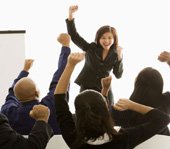
Motivation can be seen as a goal-directed strength which gets us to decide or comply with someone else’s decision to learn a language, to engage in learning activities, to tolerate the inevitable frustrations, and to persevere in the face of impatience or boredom (McDonough, 2002).
Furthermore, it became clear that when the learners have enough carte blanche to enrich their language without any Hobson’s choices (learner-centeredness), that is, the teacher is fairly permissive (as opposed to directive) and does not criticise or castigate the learners excessively for their language preferences, the learners raise their interest in the construction, reconstruction, conceptualization, and reconceptualization of effective learning in a pretty critical fashion. As a matter of fact, portfolio and peer-assessment provide the learners with opportunities to learn how to stand on their own feet, of course with the facilitative, mediatory, and enabling assistance and guidance from the side of the teacher.
In relation to motivation and its significance, Macintyre, Mackinnon, and Clément (2009, p. 47, as cited in Dörnyei, 2009) argue, “Emotions are fundamentally important motivators”. In another place, with regard to the interaction of cognition, motivation, affect, and the environment, N. Ellis and Robinson (2008, as cited in Dörnyei, 2009) believe:
Cognition, consciousness, experience, embodiment, brain, self, and human interaction, society, culture, and history are all inextricably intertwined in rich, complex, and dynamic ways in language (p. 3).
Clément, Dörnyei, and Noel (1994, as cited in Kaplan, 2002, p. 250) identified five EFL motivational orientations:
- To make friends and travel
- To identify with the target language group
- To know various peoples, cultures, and world events
- To advance academically or professionally
- To understand English-language media.
Critical Thinking, which is the upshot of portfolio assessment, helps the learners to raise their motivation to a pretty high degree. While we are talking about it, it became clear that an integrative orientation to motivation is highly expected of critical thinkers and critical learners. This is owing to the fact that according to Schmitt (2002), the integrative orientation to motivation reflects a positive disposition towards the L2 group and the desire to interact with and even become similar to valued members of that community.

Throughout the study, it was proved that the selection of highly useful and meaningful materials and topics, particularly in our conversations on challenging pre-specified topics under the title of ‘round tables’ raise their spirits to actualize peer-assessment in a positive, supportive, and cooperative rapport. In other words, when the students can embellish and enrich their learning with some topics, which are conducive to their lives, such as Time Management, Action Orientation, Personal Effectiveness, The Power of Focus, and The Effect of Self-discipline, they become fully involved in the meaningful activities and tasks in a critical manner (integrative orientation to motivation).
In so doing, in an exchange of ideas, when they are treated nonjudgmentally, the students voluntarily or involuntarily tend to evaluate and assess critically what their peers put forward. When the final assessments are collected in the form of portfolios (e.g. recorded conversations), the students will have the chance to re-evaluate the contents, which per se helps them to maximise their criticality.
In this regard, portfolio assessment does make a good contribution to increasing language learners’ critical thinking and making them more intrinsically motivated. As Lightbown and Spada (2006) have put it, in a teacher’s mind, motivated students are usually those who participate actively in class, express interest in the subject matter, and study a great deal. While we are on the subject, some of the participants maintain:
“With the help of portfolio assessment, learning logs, and the beneficial activities in this course, I learnt that nothing is impossible to a willing mind”.
“In contrast to my cousin, I don’t need my parents to force me to learn English. Because according to the title of this course, I know that I’m Learning English to Live Better. Learning logs and portfolio assessment have helped me tremendously to become my own cheerleader in my learning”.
“Thank you Mr. Hariri for this unique course because I finally learnt how to learn effectively with the help of critical thinking, portfolio assessment, your permissiveness, and the interesting activities”.
“The lectures I gave, the compositions I developed, and the discussions we held have helped me to develop a better and more critical perspective not only to my language learning, but also, even more importantly, to my entire life”.
Conclusion
The entire findings in the study are summarized and restated in this way that the employment of ‘portfolio assessment’ with the intention of increasing ‘Critical Thinking’ does help the learners to become more active, cooperative, and responsive in language learning. What’s more, intentionally or unintentionally, the level of their awareness will go up considerably because; on the one hand, the students are encouraged to assume a lot of responsibilities; and on the other hand, they are expected to give a litmus test to themselves in a critical mode for bona fide evaluation (self & peer-assessment). This is due to the fact that in a portfolio approach to assessment, the success and failure of the students is NOT merely determined in a product-oriented approach, that is to say, through final examinations.
Critical Thinking, which is achieved through portfolio assessment and learning logs, engenders feelings of importance, confidence, autonomy, and independency in language learners. As a matter of fact, when the students are invited to play active and effective roles in their learning in terms of negotiated curriculum, portfolio assessment, cooperative learning, making crucial and decisive decisions, and expressing their feedback freely so that their Critical Thinking can be boosted, they voluntarily try their best to develop their utmost to their own course(s) simply because of the fact that in this learner-centered approach, the students are humanized, rather than enslaved or alienated.
In this regard, the students can take proper charge of their own learning by twisting it around their fingers, of course under the facilitating and enabling guidance and support of their teacher. It should be pointed out here that all of the abovementioned elements, i.e. self-assessment, language awareness, autonomy, and intrinsic motivation, which are all the end results of ‘Critical Thinking’, are inextricably intertwined, so you cannot separate them from each other.
This study is intended to solve the current major problems that both the teachers and students are confronted with vis-à-vis a dearth of critical thinking on the part of the learners, which per se gives rise to other problems, such as student alienation, student enslavement, student marginalization, competitive learning, a low level of intrinsic motivation, teacher-centeredness, an overemphasis on a product-oriented approach, and so on.
This study can open up other areas of enquiry and research that are directly or indirectly related, but were not elaborated completely. It is hoped that through reading this study, the curious, enthusiastic, and critical reader will be motivated to uncover the other issues of the research, which were either untouched or barely touched, and do some research on them. Some of these issues are listed below:
- The Effect of Authentic or Alternative Assessment on Effective Learning and/or Teaching
- Continuous Assessment in Contrast with Final or Entrance Examinations
- Democracy in Teaching
- Dynamism in Education
- Individualization alongside Cooperative Learning, and
- A Theme-based Approach to Language Learning or Teaching
Appendix 1
Open-ended Questionnaire for data collection
Please answer the following questions as precisely and closely as you can within a week and contact us to send back the completed form to me via Email. Your answers will be kept completely confidential and anonymous, so please feel free to fill out the form.
I do appreciate your help in advance.
Name: Dr. Mohammad Hossein Hariri Asl
Website: https://lelb.net
- What makes this a good or interesting project?
- What is the most interesting part of the project?
- What was the most difficult part of the project?
- What did you learn from the project?
- How do you feel when you are encouraged to express your feedback?
- How did ‘learning logs’ help you to become a more critical thinker in language learning?
- What do you think about the title of the course and the website, i.e. “Learn English to Live Better”?
- What skills did you practice when doing this project?
- Did you find the course democratic by nature? Why?
- What resources did you use to complete this project?
- What were the influences of self and peer-assessment?
- What is the best part of the project? Why?
- How would you make the project better?
References
- Baak, E. (1997). Portfolio development: An introduction. Forum, 35(2).
- Banfi, C. S. (2003). Portfolios: Integrating advanced language, academic and professional skills. ELT Journal, 57(1), 34-42. doi:10.1093/elt/57.1.34
- Barkhuizen, G., & Ellis, R. (2005). Analyzing learner language. Oxford: Oxford University Press.
- Bastidas, J. A. (1996). The teaching portfolio: A tool to become a reflective teacher. Forum, 34(3).
- Bowell, T., & Kemp, G. (2002). Critical thinking: A concise guide. London: Routledge.
- Brown, H. D. (2001). Teaching by principles: An interactive approach to language pedagogy. White Plains, NY: Addison Wesley Longman, Inc.
- Brown, H. D. (2004). Language assessment: Principles and classroom practices. White Plains, NY: Pearson Education, Inc.
- Browne, M. N., & Keeley, S. M. (2007). Asking the right questions: A guide to critical thinking. New Jersey: Pearson Education, Inc.
- Burden, R. L., & Williams, M. (1997). Psychology for language teachers: A social constructivist approach. Cambridge: Cambridge University Press.
- Celce-Murcia, M. C. (2001). Teaching English as a second or foreign language. Boston, MA: Heinle & Heinle.
- Cook, V. (2008). Second language learning and second language teaching. London: Hodder Education, Inc.
- Cottrell, S. (2005). Critical thinking skills: Developing effective analysis and argument. New York: Palcrave Macmillan, Inc.
- Davies, A., & Elder, C. (2006). The handbook of applied linguistics. Malden: Blackwell Publishing, Ltd.
- Dörnyei, Z. (2009). The psychology of second language acquisition. Oxford: Oxford University Press.
- Gass, S. M. & Mackey, A. (2005). Second language research: Methodology and design. New Jersey: Lawrence Erlbaum Associates, Inc.
- Hall, D. R., & Hewings, A. (2001). Innovation in English language teaching, a reader. London: Routledge.
- Hariri Asl, M. H. (2011). Learn English to Live Better. LELB Society: An Online International Language School. Available at https://lelb.net
- Hegelheimer, V., & Tower, D. (2004). Using CALL in the classroom: Analyzing student interaction in an authentic classroom. System, 32, 185-205. doi:10.1016/j.system.2003.11.007
- Johns, A.M. (1995). An excellent match: Literary portfolios and ESP. Forum, 33(4).
- Kaplan, R. B. (2002). The Oxford handbook of applied linguistics. Oxford: Oxford University Press.
- Lightbown, P. M., & Spada, N. (2006). How languages are learned. Oxford: Oxford University Press.
- Little, D. (2005). The common European framework and the European language portfolio: Involving learners and their judgements in the assessment process. Language Testing, 22(3), 321-336. doi:10.1191/0265532205lt311oa
- McDonough, S. (2002). Applied linguistics in language education. London: Hodder Headline Group.
- McKay, S. L. (2006). Researching second language classrooms. New Jersey: Lawrence Erlbaum Association, Inc.
- Merriam, S. B. (1998). Qualitative research and case study applications in education. San Francisco: Jossey-Bass Inc.
- Mosallanejad, P., & Hariri Asl, M. H. (2010). Essentials of practical writing. Tehran: Sepahan Publication, Inc.
- Nunan, D. (2003). Practical English language teaching. New York: McGraw-Hill Companies, Inc.
- Nunes, A. (2004). Portfolios in the EFL classroom: Disclosing an informed practice. ELT Journal, 58(4), 327-335. doi:10.1093/elt/58.4.327
- Pierce, L. V., & O’Malley, J. M. (1992). Performance and portfolio assessment for language minority students. NCBE Program Information Guide Series, 9, 1-38.
- Rea, S. (2001). Portfolios and process writing: A practical approach. The Internet TESL Journal, 7(6).
- Richards, J. C. (1998). Classroom-based evaluation in second language education. Cambridge: Cambridge University Press.
- Richards, J. C. (2001). Curriculum development in language teaching. New York: Cambridge University Press.
- Richards, J. C., & Renandya, W. A. (2002). Methodology in language teaching, an anthology of current practice. Cambridge: Cambridge University Press.
- Richards, J. C., & Schmidt, R. (2002). Longman dictionary of language teaching and applied linguistics. Edinburg: Pearson Education Limited.
- Santos, M. G. (1997). Portfolio assessment and the role of learner reflection. Forum, 35(2).
- Schmitt, N. (2002). An introduction to applied linguistics. London: Hodder Headline Group.
- Tanner, R., Longayroux, D., Beijaard, D., & Verloop, N. (2000). Piloting portfolios: Using portfolios in pre-service teacher education. ELT Journal, 54(1), 20-30. doi:10.1093/elt/54.1.20
- Unrau, N. J. (1997). Thoughtful teachers, thoughtful learners: A guide to helping adolescents think critically. Ontario: Pippin Publishing Corporation.
- Willis, D., & Willis, J. (2007). Doing task-based teaching. Oxford: Oxford University Press.
- Wyrick, J. (2008). Steps to writing well. Boston: Thomson Higher Education.
How to cite this article in APA Style?
Hariri Asl, M. H. (2023). 10 portfolio assessment advantages in ESL classes. LELB Society, https://lelb.net/10-portfolio-assessment-advantages/



